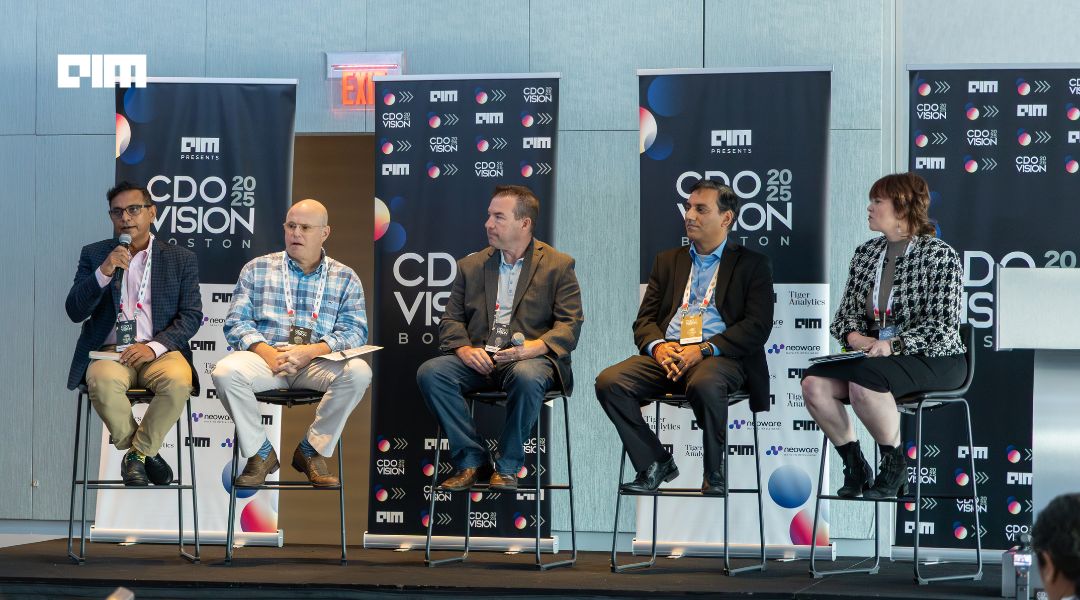The average customer interaction today involves eight different touchpoints, yet most organizations still treat each engagement as an isolated event. This approach is colliding with customer expectations shaped by AI-powered platforms that remember preferences, predict needs, and deliver seamless experiences.
AI-first solutions are addressing this divide by creating truly connected customer journeys. Financial services firms deploy conversational AI that reduces resolution times from days to minutes. Retail platforms anticipate customer preferences before purchases are made. Healthcare providers deliver personalized care recommendations at scale. These intelligent systems represent a shift toward responsive customer relationships. Instead of forcing customers through rigid processes, AI-driven engagement adapts to individual behaviors and goals, delivering measurable improvements in satisfaction and business outcomes.
This development opens the door for a closer look at AI’s role in customer engagement. The CDO Vision Boston hosted a panel discussion on “AI-Driven Systems of Engagement and the Future of Customer Interaction” that brought together industry leaders to examine real-world implementations and future possibilities. Moderated by Maria Laverghetta, Chief Data Intelligence Officer at Wordcom, and the panelists include Yogesh Bhardwaj Sr. Director – GSO, Data & IT Shared Services at Sensata Technologies, Matthew Marino Vice President, Head of Operations at ShelterPoint, Eric Karofsky Founder/CEO at VectorHX and Shahidul Mannan Chief Data, Analytics and AI Officer at Orlando Health.
Fix Your Processes Before Adding AI
Organizations consistently make the mistake of layering artificial intelligence onto broken workflows. Financial services firms with convoluted claims processing, healthcare systems spending hours on physician documentation, and retail platforms with poorly mapped customer journeys all share this challenge. AI accelerates whatever processes already exist including the inefficient ones.
The sequence matters. Process discovery comes first, followed by standardization and improvement, with AI enhancement as the final step. This requires business analysts who understand both operational workflows and technical capabilities, professionals who can bridge the gap between what technology can do and what business operations actually need.
Companies that skip this foundational work end up with AI tools that amplify existing problems rather than solving them. Instead of creating the seamless, connected experiences customers expect, they produce faster versions of the same fragmented interactions.
Build Trust Through Transparency and Results
Trust remains the primary barrier to AI adoption across industries. When customers and employees encounter black-box systems that provide outputs without clear reasoning, resistance follows. This challenge intensifies in regulated sectors where compliance officers need to explain decision-making processes to auditors.
Recent studies show failure rates of 80-95% for agentic AI applications in demonstrating business value. These statistics reflect the gap between AI capabilities and practical implementation. Healthcare organizations receive 10-15 vendor pitches monthly, but many solutions fail basic evaluation criteria for privacy, security, and integration requirements.
Successful AI implementations focus on explainability from the start. Users need to understand how systems reach conclusions, what data influences decisions, and when human intervention is required. Without this transparency, even technically sophisticated tools that promise to connect customer touchpoints struggle to gain traction.
Integrate AI Across Enterprise Systems
Individual productivity tools like Microsoft Copilot provide personal benefits but rarely translate to enterprise-level impact. The real value emerges when AI connects across ERPs, CRMs, EMRs, and other core business platforms, creating the unified customer view that enables truly connected journeys. AI systems are inherently non-deterministic, meaning they can produce different outputs for similar inputs. This characteristic requires continuous monitoring, retraining, and governance, especially when integrated across multiple enterprise systems that support customer interactions.
AI delivers the most impact when embedded within the broader enterprise ecosystem, rather than deployed as a standalone solution. This approach requires technical architecture that supports data flow between systems and business processes that account for AI’s probabilistic nature while maintaining consistent customer experiences.
Address Real Pain Points With Measurable Impact
Healthcare’s ambient AI implementation provides a clear success model for connected customer engagement. Physicians spend two hours on administrative work for every hour with patients, a quantifiable problem that creates friction in the patient experience. AI-powered documentation systems that listen to patient conversations and automatically update records address this specific bottleneck while improving care continuity.
The key factors in this success include clear problem definition, measurable outcomes, and direct benefits for both providers and patients. Physicians readily adopt technology that reduces their administrative burden because the value proposition is immediate and tangible, ultimately enabling more personalized patient interactions. Contrast this with AI implementations that lack clear business alignment. Projects developed in isolation by engineering teams, without connection to specific customer journey pain points or business KPIs, consistently fail to gain adoption regardless of their technical sophistication.
Invest in Culture Change and Co-Design
Organizational culture determines AI success more than technical capabilities. As industry leaders emphasize, “culture eats strategy”, the best AI initiatives fail without cultural alignment and user buy-in from both employees and customers. Successful organizations involve end users in the design process from the beginning. Co-design workshops, participatory development approaches, and regular feedback loops create internal champions who understand and support new systems. When users help build solutions, they develop ownership and become advocates for adoption.
This cultural transformation requires upskilling existing workforce rather than replacing them. Traditional business analysts, process experts, and customer service representatives can transition to AI-focused roles with proper training. Organizations that invest in internal capability development see better adoption rates and more successful customer engagement outcomes.
The pattern across successful implementations is consistent: start with processes, build trust through transparency, integrate across systems, solve real problems, and invest in people and culture. Organizations that follow this sequence transform fragmented touchpoints into connected customer journeys that deliver measurable improvements in satisfaction and business outcomes. Those that skip steps face the high failure rates that continue to plague AI implementations across industries. While these challenges are significant, industry leaders identify clear pathways forward that will reshape how organizations approach AI-driven customer engagement.
The Future of Connected Customer Experiences
Healthcare’s physician documentation success demonstrates a model that applies across industries. Administrative claims processing, customer service routing, and compliance reporting all represent areas where AI can eliminate hours of manual work while improving accuracy. The key driver is immediate, measurable value for users who experience daily pain from these processes.
Process mining will merge with conversational intelligence. Organizations are beginning to combine process discovery tools with AI-powered analysis that can identify inefficiencies in real time and provide actionable recommendations. This integration allows business leaders to understand not just what processes exist, but how AI can specifically improve them and what the expected impact will be.
AI translator roles will become essential. The workforce is evolving to include hybrid professionals who bridge business outcomes and technical AI capabilities. These specialists understand both organizational KPIs and AI system limitations, ensuring implementations align with real business value rather than technical possibilities.
Governance frameworks will mature for non-deterministic systems. As AI becomes embedded in customer-facing processes, organizations are developing continuous monitoring, retraining, and auditing practices. These frameworks manage the inherent unpredictability of AI while maintaining the consistency customers expect from connected experiences.
Regulatory compliance will drive vendor differentiation. Healthcare organizations already eliminate half of potential AI vendors during initial evaluation due to privacy, security, or compliance gaps. This regulatory pressure will intensify across industries, making compliance readiness a primary factor in AI adoption decisions rather than just technical capabilities.
AI-driven engagement holds strong potential for transforming fragmented customer touchpoints into connected experiences, but success depends on factors beyond core technology. Organizations must prioritize process improvement, effective governance, system integration, and user involvement in design. The determining factor is adoption, users’ willingness to trust and embed AI into daily workflows. Clear, high-value use cases like healthcare’s ambient AI demonstrate that when technology directly relieves significant burdens, acceptance follows quickly. Long-term sustainability requires cultivating internal champions and focusing on carefully chosen pilots tied to measurable business outcomes rather than chasing technological hype.










